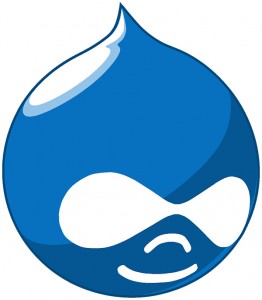
Drupal is an incredibly powerful content management system, with a high degree of flexibility and customizability. At the same time, it tends to be a touch more resource-intensive than other content management systems — it’s a bit of a memory hog. If a Drupal installation isn’t properly optimized, it could very easily run into a whole host of performance problems as a website grows.
It goes without saying that this is something you want to avoid if at all possible. After all, a sluggish website makes for a poor user experience, a poor user experience makes for lower search rankings, and lower search rankings make for lower traffic. Not really a cycle any webmaster wants to find their site in, is it?
Thankfully, by implementing the proper tweaks, you can prevent this from happening. Here are just a few of the best tactics for optimizing your Drupal installation’s performance (courtesy of Cloud Reviews).
Utilize Drupal’s Cache
The most basic step you can take to increase Drupal’s performance is to look under the Performance tab of your Drupal configuration. Once there, simply enable the cache, and Drupal will begin storing database queries, leading to faster load-times for your visitors. If you want to take things a step further, you might also consider setting your cache up so that entries have a minimum life-span.
Optimize Images
One of the first things I learned about website optimization – and this is something that isn’t tied exclusively to Drupal – is that you should never leave image resizing to the browser. Even though users are seeing the resized image, the browser still has to download the unoptimized version. Depending on how image-intensive your website is, that can amount to a huge volume of unnecessary data and a significant increase in page load times.
Resize and compress your images prior to uploading them (or at the very least, use some sort of optimization code like Image Resize Filter).
Install The BOOST Module(Or Varnish)
BOOST is very likely one of the most powerful tools in your arsenal as far as performance optimization is concerned. This application provides static page caching for Drupal, providing a huge boost to performance and scalability for most websites – particularly those on shared hosting plans.
If you’re using Drupal on a dedicated server, Varnish might be a better choice.
Do note that in both cases, you’re going to have to perform a little bit of technical wizardry to get the module working. The resulting performance boost is well worth the effort though – there’s a reason these two modules are so highly-praised within the Drupal community.
Make Use Of Mongo
If you’ve got an expert programmer on-board (or you fancy yourself as one), you might consider implementing MongoDB into your Drupal installation. This powerful NoSQL database can easily send the performance of a Drupal-run website through the roof. Of course, as I’ve already said, this isn’t an optimization for the faint of heart – you’re going to need an expert on board to get this properly implemented without inadvertently destroying your site.
Benchmark Your Server
If you aren’t quite certain where to start with the optimization process, consider checking out one of the many profiling resourcesavailable online. These benchmarking tools are designed to track down performance bottlenecks in your installation – they can help you if you’re stumped as to how you can improve your performance.
Consider A Content Delivery Network
Last but certainly not least, if you’re running a larger organization, a content delivery network might be worth your time. This will allow you to both expand the reach of your website and improve its performance – basically, you’ll be able to kill two birds with one stone.




